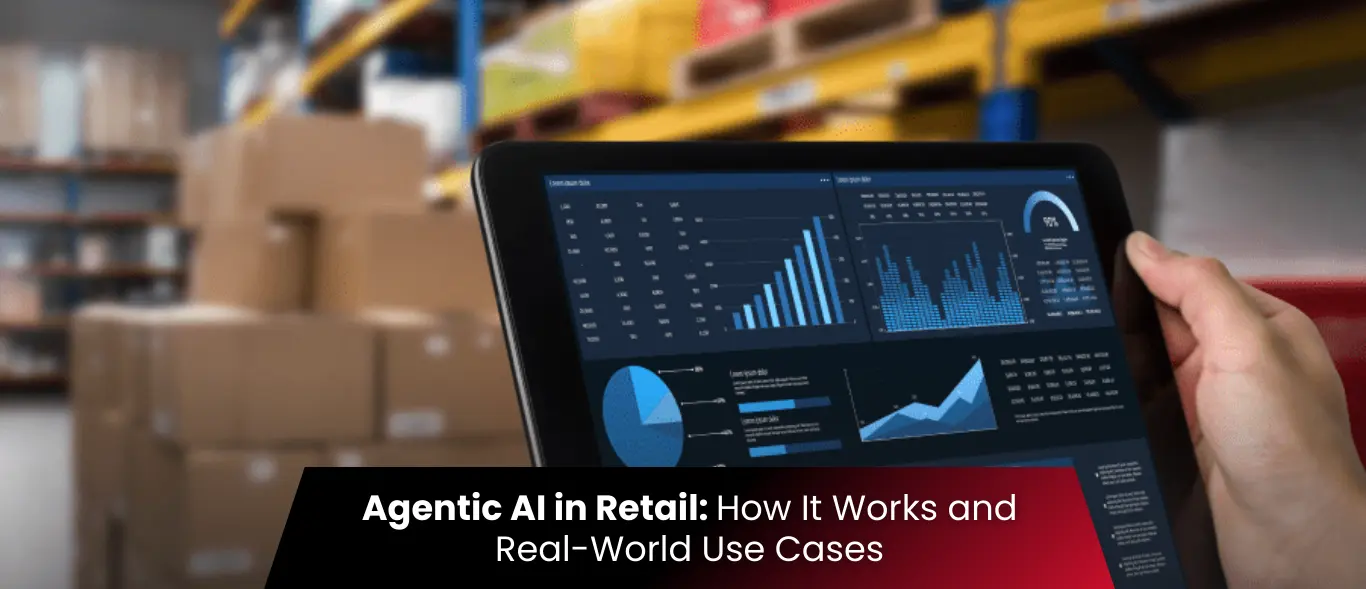Augmented Analytics: The Future of Business Intelligence
In today's data-driven business landscape, organizations generate more data than ever. However, the challenge isn't just collecting data—it's extracting meaningful insights from it quickly and efficiently. Traditional business intelligence (BI) approaches often require specialized skills and significant time investments, creating bottlenecks in decision-making processes.
This is where augmented analytics comes in. It represents the next evolution of business intelligence, combining artificial intelligence (AI), machine learning (ML), and natural language processing (NLP) to automate data preparation, insight generation, and even decision recommendations.
What is Augmented Analytics?
Augmented analytics is a category of analytics that uses machine learning and natural language generation to automate data preparation, insight discovery, and insight sharing. It represents a significant shift from traditional BI tools that require users to explore data and create reports manually.
Key Components of Augmented Analytics
- Automated Data Preparation
- Intelligent data cleaning and transformation
- Automatic feature engineering
- Data quality assessment and improvement
- Schema detection and mapping
- Automated Insight Discovery
- Pattern recognition and anomaly detection
- Correlation analysis and relationship discovery
- Trend identification and forecasting
- Root cause analysis
- Natural Language Processing
- Conversational analytics interfaces
- Automated report generation
- Natural language query capabilities
- Context-aware recommendations
- Machine Learning Integration
- Predictive analytics and forecasting
- Automated model selection and tuning
- Continuous learning and improvement
- Explainable AI for transparency
Ready to transform your business intelligence with augmented analytics? >>> Learn More
Why Augmented Analytics Matters
1. Democratizing Data Access
Traditional BI tools often require specialized technical skills, creating a barrier between data and business users. Augmented analytics breaks down these barriers by:
- Natural Language Queries: Users can ask questions in plain English
- Automated Insights: Key findings are automatically surfaced
- Visual Storytelling: Complex data is presented in intuitive ways
- Guided Exploration: Users are guided to relevant insights
2. Accelerating Decision Making
In today's fast-paced business environment, speed is crucial. Augmented analytics provides:
- Real-time Insights: Immediate access to current data and trends
- Automated Alerts: Proactive notification of significant changes
- Predictive Capabilities: Forward-looking insights for planning
- Contextual Recommendations: Actionable suggestions based on data
3. Improving Data Literacy
Augmented analytics helps organizations build data-driven cultures by:
- Reducing Learning Curves: Intuitive interfaces require minimal training
- Providing Guidance: Users learn from automated suggestions
- Building Confidence: Clear explanations help users trust insights
- Encouraging Exploration: Safe environment for data discovery
Key Applications and Use Cases
1. Sales and Marketing Analytics
Customer Behavior Analysis
Augmented analytics can automatically identify:
- Customer segments and personas
- Purchase patterns and preferences
- Churn risk indicators
- Cross-selling opportunities
Example: A retail company uses augmented analytics to automatically detect that customers who purchase winter clothing in September are 40% more likely to buy accessories, leading to targeted marketing campaigns.
Campaign Performance Optimization
Automated insights help marketers:
- Identify high-performing channels and messages
- Optimize timing and frequency
- Predict campaign outcomes
- Allocate the budget more effectively
2. Financial Analytics
Risk Management
Augmented analytics provides:
- Automated fraud detection
- Credit risk assessment
- Market risk monitoring
- Regulatory compliance tracking
Performance Analysis
Financial teams can automatically discover:
- Revenue trends and drivers
- Cost optimization opportunities
- Profitability insights
- Cash flow patterns
3. Operational Analytics
Supply Chain Optimization
Augmented analytics helps identify:
- Inventory optimization opportunities
- Supplier performance trends
- Demand forecasting insights
- Logistics efficiency improvements
Quality Control
Manufacturing teams can automatically detect:
- Quality trend patterns
- Defect root causes
- Process improvement opportunities
- Predictive maintenance needs
4. Human Resources Analytics
Employee Performance
HR teams can automatically discover:
- Performance patterns and trends
- Retention risk factors
- Training effectiveness
- Workforce planning insights
Recruitment Optimization
Augmented analytics helps:
- Identify successful candidate profiles
- Optimize job posting strategies
- Predict hiring success
- Reduce time-to-hire
Technology Stack for Augmented Analytics
1. Core Technologies
Machine Learning Platforms
- TensorFlow/PyTorch: Deep learning and neural networks
- Scikit-learn: Traditional ML algorithms
- AutoML Tools: Automated model selection and tuning
- MLOps Platforms: Model deployment and management
Natural Language Processing
- BERT/GPT Models: Advanced language understanding
- SpaCy/NLTK: Text processing and analysis
- Conversational AI: Chatbot and voice interfaces
- Text Generation: Automated report writing
Data Processing
- Apache Spark: Large-scale data processing
- Pandas/NumPy: Data manipulation and analysis
- Streaming Platforms: Real-time data processing
- Data Lakes: Flexible data storage
2. Integration Capabilities
Data Connectors
- APIs and Webhooks: Real-time data integration
- Database Connectors: SQL and NoSQL databases
- Cloud Platforms: AWS, Azure, Google Cloud
- Business Applications: CRM, ERP, marketing tools
Visualization and Reporting
- Interactive Dashboards: Dynamic data visualization
- Natural Language Generation: Automated report writing
- Mobile Applications: Access insights anywhere
- Collaboration Tools: Share insights across teams
Implementation Best Practices
1. Start with Clear Objectives
- Define Use Cases: Identify specific business problems to solve
- Set Success Metrics: Establish clear KPIs for measurement
- Prioritize Opportunities: Focus on high-impact, low-complexity projects
- Plan for Scale: Design architecture for future growth
2. Build a Strong Foundation
- Data Quality: Ensure clean, reliable data sources
- Governance: Establish data policies and controls
- Security: Implement appropriate access controls
- Compliance: Address regulatory requirements
3. Focus on User Experience
- Intuitive Design: Create interfaces that require minimal training
- Contextual Help: Provide guidance and explanations
- Personalization: Adapt to individual user preferences
- Feedback Loops: Continuously improve based on user input
4. Ensure Transparency and Trust
- Explainable AI: Provide clear explanations for insights
- Data Lineage: Track data sources and transformations
- Confidence Scores: Indicate reliability of predictions
- Human Oversight: Maintain human control over critical decisions
Challenges and Considerations
1. Data Quality and Governance
- Data Silos: Breaking down organizational barriers
- Data Consistency: Ensuring uniform standards across sources
- Data Privacy: Protecting sensitive information
- Regulatory Compliance: Meeting industry and legal requirements
2. Change Management
- User Adoption: Overcoming resistance to new tools
- Skill Development: Training teams on new capabilities
- Process Changes: Adapting workflows to new approaches
- Cultural Shift: Building a data-driven decision-making culture
3. Technical Complexity
- Integration Challenges: Connecting diverse systems and data sources
- Performance Requirements: Meeting speed and scalability needs
- Maintenance Overhead: Ongoing system updates and improvements
- Vendor Lock-in: Avoiding dependency on single solutions
4. Ethical Considerations
- Bias Detection: Identifying and mitigating algorithmic bias
- Fairness: Ensuring equitable treatment across user groups
- Transparency: Making decision processes understandable
- Accountability: Establishing responsibility for automated decisions
Measuring Success and ROI
1. Quantitative Metrics
- Time to Insight: Reduction in time from question to answer
- User Adoption: Percentage of target users actively using the system
- Decision Speed: Improvement in time to make data-driven decisions
- Cost Savings: Reduction in manual analysis and reporting costs
2. Qualitative Benefits
- User Satisfaction: Improved experience and satisfaction scores
- Data Literacy: Increased confidence in using data for decisions
- Innovation: New insights and opportunities discovered
- Competitive Advantage: Improved market position and performance
3. Business Impact
- Revenue Growth: Increased sales and market share
- Cost Reduction: Improved operational efficiency
- Risk Mitigation: Better risk identification and management
- Customer Experience: Enhanced customer satisfaction and retention
Future Trends and Evolution
1. Advanced AI Integration
- Multimodal AI: Processing text, images, and voice data
- Federated Learning: Collaborative model training across organizations
- Edge AI: Local processing for real-time insights
- Quantum Computing: Exponential performance improvements
2. Enhanced User Experience
- Voice Interfaces: Natural language conversations with data
- Augmented Reality: Immersive data visualization
- Personalized Insights: Tailored recommendations for each user
- Collaborative Analytics: Team-based exploration and analysis
3. Industry-Specific Solutions
- Healthcare Analytics: Clinical decision support and patient insights
- Financial Services: Risk management and regulatory compliance
- Manufacturing: Predictive maintenance and quality control
- Retail: Customer behavior and inventory optimization
Getting Started with Augmented Analytics
1. Assessment Phase
- Current State Analysis: Evaluate existing analytics capabilities
- Gap Identification: Identify missing capabilities and opportunities
- Stakeholder Engagement: Involve business users and IT teams
- Technology Evaluation: Assess available solutions and platforms
2. Pilot Project
- Select Use Case: Choose a specific business problem to solve
- Define Scope: Set clear boundaries and success criteria
- Build Prototype: Develop initial solution with core capabilities
- Test and Iterate: Validate with users and refine approach
3. Scale and Optimize
- Expand Scope: Add more use cases and data sources
- Improve Performance: Optimize algorithms and infrastructure
- Enhance Features: Add advanced capabilities and integrations
- Build Expertise: Develop internal skills and knowledge
Conclusion
Augmented analytics represents a fundamental shift in how organizations approach business intelligence and decision-making. Combining the power of AI, machine learning, and natural language processing democratizes access to data insights and accelerates the path from data to decisions.
The key to success with augmented analytics is to:
- Start Small: Begin with focused pilot projects to demonstrate value
- Focus on Users: Design solutions that address real business needs
- Ensure Quality: Build on a foundation of clean, reliable data
- Maintain Transparency: Provide clear explanations and maintain human oversight
- Iterate Continuously: Learn from user feedback and improve over time
As organizations continue to generate more data and face increasing pressure to make faster, better decisions, augmented analytics will become essential for competitive advantage. The future belongs to organizations that can turn their data into actionable intelligence quickly, efficiently, and at scale.
The journey to augmented analytics may seem daunting, but the benefits are substantial. Organizations that embrace this technology thoughtfully and strategically will be well-positioned to thrive in the data-driven economy of the future.
Ready to transform your business intelligence with augmented analytics? >>> Learn More


